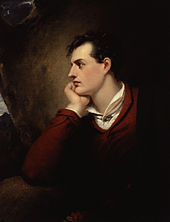Romanticism and Enlightenment (27)
The terms Romanticism and Enlightenment seemed to be juxtaposed; Romanticism is working against the strict confines of "reason" based science, while Enlightenment seems to be moving in directly the opposite direction. According to Wikipedia, Romanticism peaked between 1800-1850 (although these dates are general and slippery). The age of Enlightenment began around roughly 1650, until it gave way to Romanticism. One important enlightenment thinker is Isaac Newton, whose laws are referenced by Thomasina. In short, these two terms represent two different ways of thinking: Enlightenment focuses on science and reason, while Romanticism is aimed more towards beauty and aestheticism. (Think Locke vs. Wordsworth).In relation to Arcadia, these different types of thinking lead to the contrast of Bernard and Hannah. Bernard is a Byron scholar who looks for aesthetics, while Hannah adamantly opposes all forms of sentimentalism. Also, the 1809 scene is stuck amidst the transitional period between Enlightenment and Romanticism. While these two thinking models do not change overnight, perhaps, (if not already), we will be able to see people from each "school" of thinking in 1809 and their personal reasoning for that mode of thought. The text seems to be setting up a conflict between reason/beauty.
Examples: Romantic vs. Enlightened
"Byron" and "Wanderer" are Romantic examples.
"Muses" is Enlightenment art.
 |
Caspar David Friedrich, Wanderer Above the Sea of Fog, 1818 Richard Westall, Lord Byron |
 |
| Weimar's Courtyard of the Muses, Theobald von Oer Christian Wolff Works Cited http://en.wikipedia.org/wiki/Age_of_Enlightenment http://en.wikipedia.org/wiki/Romanticism |
No comments:
Post a Comment